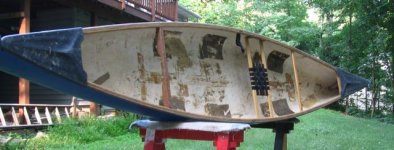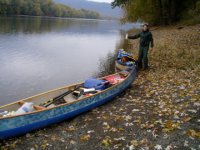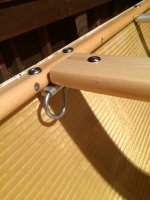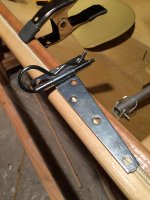I've been enjoying poling in my Appalachian, and now I am thinking of setting it up for poling.
One thing I'd like to be able to do is easily move stern-toward-bow or bow-toward-stern, so that I can trim the boat to keep the upstream end higher. Keep in mind that the upstream end of the boat changes, depending on whether I am traveling with the current or against the current.
I'd also like a seat from which to solo paddle when the water gets too deep for poling.
I want a carry thwart, although a center thwart makes it difficult to move across the center of the canoe. I guess that means either a removable carry thwart or some sort of carry strap.
So, what is your favorite way to set up a canoe for poling?
One thing I'd like to be able to do is easily move stern-toward-bow or bow-toward-stern, so that I can trim the boat to keep the upstream end higher. Keep in mind that the upstream end of the boat changes, depending on whether I am traveling with the current or against the current.
I'd also like a seat from which to solo paddle when the water gets too deep for poling.
I want a carry thwart, although a center thwart makes it difficult to move across the center of the canoe. I guess that means either a removable carry thwart or some sort of carry strap.
So, what is your favorite way to set up a canoe for poling?




